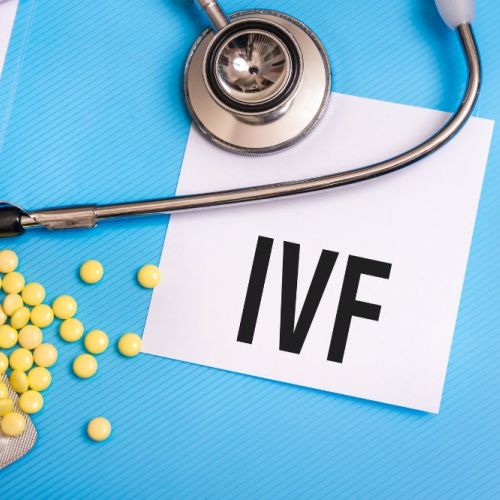How to Track Fertility

Women go through hormonal changes that can affect whether pregnancy occurs. Your fertility window refers to the time during your menstrual cycle when pregnancy has the best chance of happening. Usually this means the five days before you ovulate, the day of ovulation and the following day. Knowing how to track fertility helps you pinpoint the days of the month when you have the best chance of being able to conceive.
The team at the Center for Reproductive Health is committed to helping patients understand what actions to take that may help increase fertility.
What Happens During the Menstrual Cycle?
The first day of your period is considered the first day of your menstrual cycle. If you have a 28 day cycle, about two weeks after the cycle begins, hormones cause follicles to begin to develop into a fully mature egg in one of your ovaries. When you ovulate, the mature egg is released and it travels down your fallopian tube and is ready for fertilization by a sperm. At this point in your cycle, the lining of your uterus prepares to have a fertilized egg implanted by getting thicker.
Knowing When Your Ovulating
Determining when you’re ovulating lets you know when you’re most fertile and the best time to have sex if you’re hoping to conceive. There are a few tracking methods, which include:
- The calendar method. This method is used to track how long your menstrual cycle usually is over the course of several months. The length of your cycle is the number of days between the day your period starts to the first day of your next period. This can help you identify the time you’re most likely to ovulate, which is typically around 14 days before the next cycle begins.
- Basal body temperature method. A basal thermometer measures your body temperature to a tenth of a degree. Take your temperature each morning and record your daily temperature for at least three months. When you ovulate, your basal body temperature rises by approximately 0.5 degrees Fahrenheit. Tracking your daily basal body temperature for a few months can help you identify your pattern of ovulation.
- Cervical mucous method. When vaginal mucous is heavy and wet, it’s a sign that you’re ovulating. Your fertility specialist can help you have a clearer understanding of this method and the best way to track this information.
For the most accurate prediction of ovulation, use all of these methods simultaneously. These methods may not work if your periods are irregular. Menstrual cycles are usually between 21 and 35 days. If your cycles are longer or shorter than that or if they vary by more than a few days each month, talk to your fertility specialist. Irregular periods may be a sign of a hormone imbalance.
Tracking fertility may help you achieve a successful pregnancy. Reach out to the experts at the Center for Reproductive Health for additional help tracking ovulation and to learn what else you can do that may help improve your chance of conceiving a baby.
Eliran Mor, MD
Reproductive Endocrinologist located in Encino, Santa Monica, Valencia & West Hollywood, CA
FAQ
Reproductive endocrinology and Infertility is a sub-specialty of Obstetrics and Gynecology. In addition to managing medical and surgical treatment of disorders of the female reproductive tract, reproductive endocrinologist and infertility (REI) specialists undergo additional years of training to provide fertility treatments using assisted reproductive technology (ART) such as in vitro fertilization.
Reproductive endocrinologists receive board certification by the American Board of Obstetrics and Gynecology in both Obstetrics and Gynecology and Reproductive Endocrinology and Infertility.
In general, patients should consider consulting with an REI specialist after one year of trying unsuccessfully to achieve pregnancy. The chance of conceiving every month is around 20%, therefore after a full year of trying approximately 15% of couples will still not have achieved a pregnancy.
However, if a woman is over the age of 35 it would be reasonable to see a fertility specialist earlier, typically after 6 months of trying.
Other candidates to seek earlier treatment are women who have irregular menses, endometriosis, fibroids, polycystic ovary syndrome (PCOS), women who have had 2 or more miscarriages, or problems with the fallopian tubes (prior ectopic pregnancy).
Approximately 1/3 of the time cause for infertility is a female factor, 1/3 of the time a male factor, and the remaining 1/3 a couples’ factor.
At CCRH, we emphasize the importance of establishing a correct diagnosis. Both partners undergo a comprehensive evaluation including a medical history and physical exam.
Furthremore, the woman’s ovarian reserve is assessed with a pelvic ultrasound and a hormonal profile. A hysterosalpingogram (HSG) will confirm fallopian tube patency and the uterine cavity is free of intracavitary lesions. A semen analysis is also obtained to evaluate for concentration, motility, and morphology of the sperm.
Additional work up is then individualized to direct the best possible treatment option for each couple.
In vitro fertilization (IVF) is the process that involves fertilization of an egg outside of a woman’s body.
The process starts with fertility drugs prescribed to help stimulate egg development. In your natural cycle, your body is only able to grow one dominant egg, but with stimulation medication we can recruit multiple eggs to continue to grow. After about 8-10 days of stimulation, the eggs are surgically retrieved and then fertilized with sperm in a specialized laboratory. Fertilized eggs are then cultured under a strictly controlled environment within specialized incubators in the IVF laboratory for 3-5 days while they develop as embryos. Finally, embryos (or an embryo) are transferred into the uterine cavity for implantation.
Before deciding if IVF is the right choice, it’s important to sit down with an REI specialist to discuss available treatment options. For some people, other methods such as fertility drugs, intrauterine insemination (IUI) may be the best first choice treatment. At CCRH, we believe each individual couple is unique and not everyone needs IVF.
While not painful, the fertility medications may some side effects including headaches, hot flashes, mood swings, and bloating. The injection sites may also bruise.
Unfortunately, no. Many people think once they start IVF it’s a matter of time that they will be pregnant and have a baby. But according to national statistics per the Society of Assisted Reproduction (SART), on average 40% of assisted reproduction cycles achieve live births in women under age 35. The chances of success then continue to decrease with advancing age.
At CCRH, we employ only evidence-based interventions to ensure patient safety and optimal outcome. While we cannot guarantee a baby, we guarantee that you will receive the best, most advanced, personalized care to help you maximize your chance of a baby.
The average IVF success rate (success measured in live birth rate) using one’s own eggs begins to drop around age 35 and then rapidly after age 40. This is due to the decline in egg quantity and egg quality as a woman ages.
Our clinic’s success rate consistently beats the national average year after year.
Individual insurance plans often do not have any coverage for infertility treatments. If you have a group plan, you can call members services to see if they have coverage for infertility (including consultation/workup and IVF).
After your consultation with our REI specialist, one of our dedicated account managers with sit with you to go over the cost of treatment.




